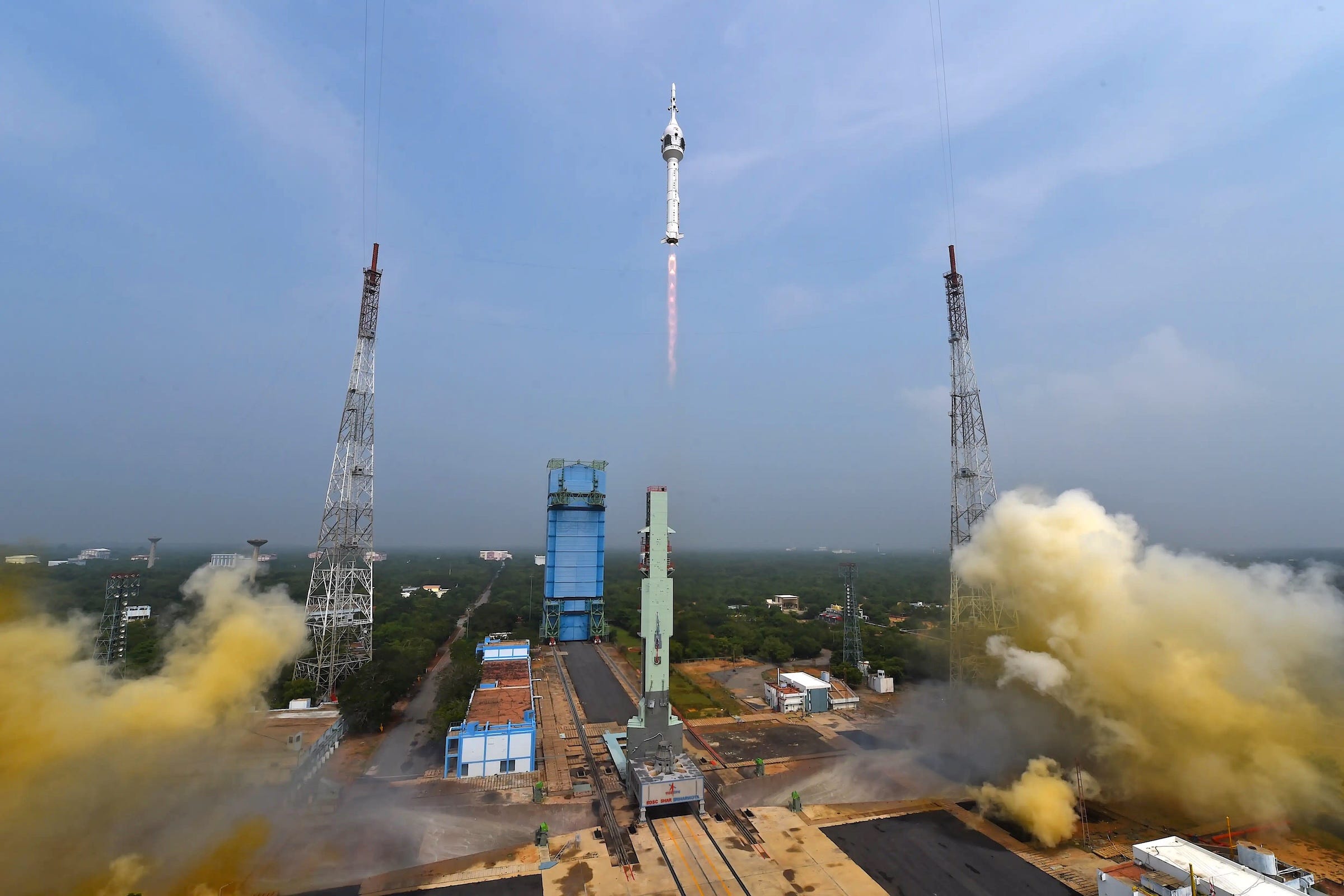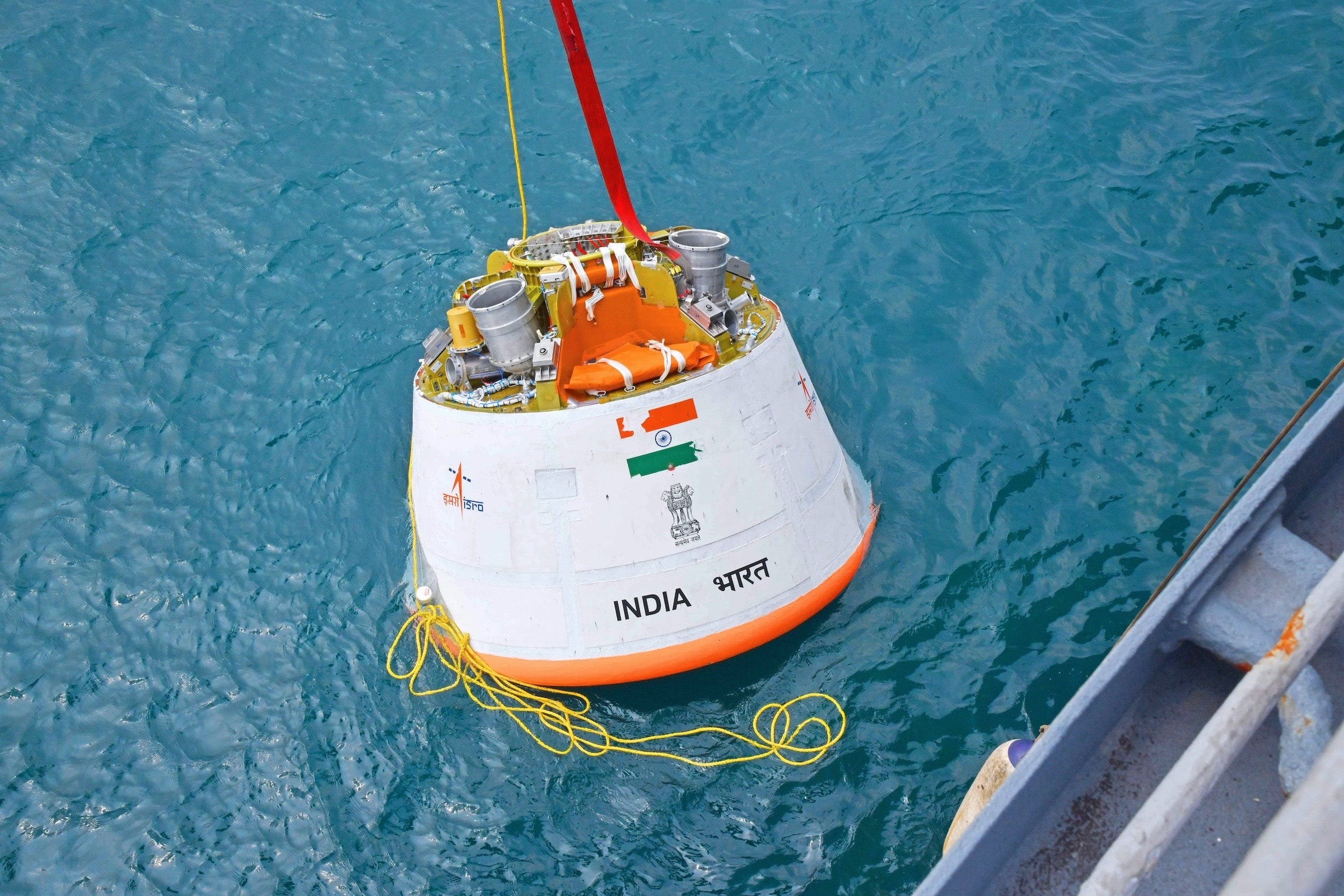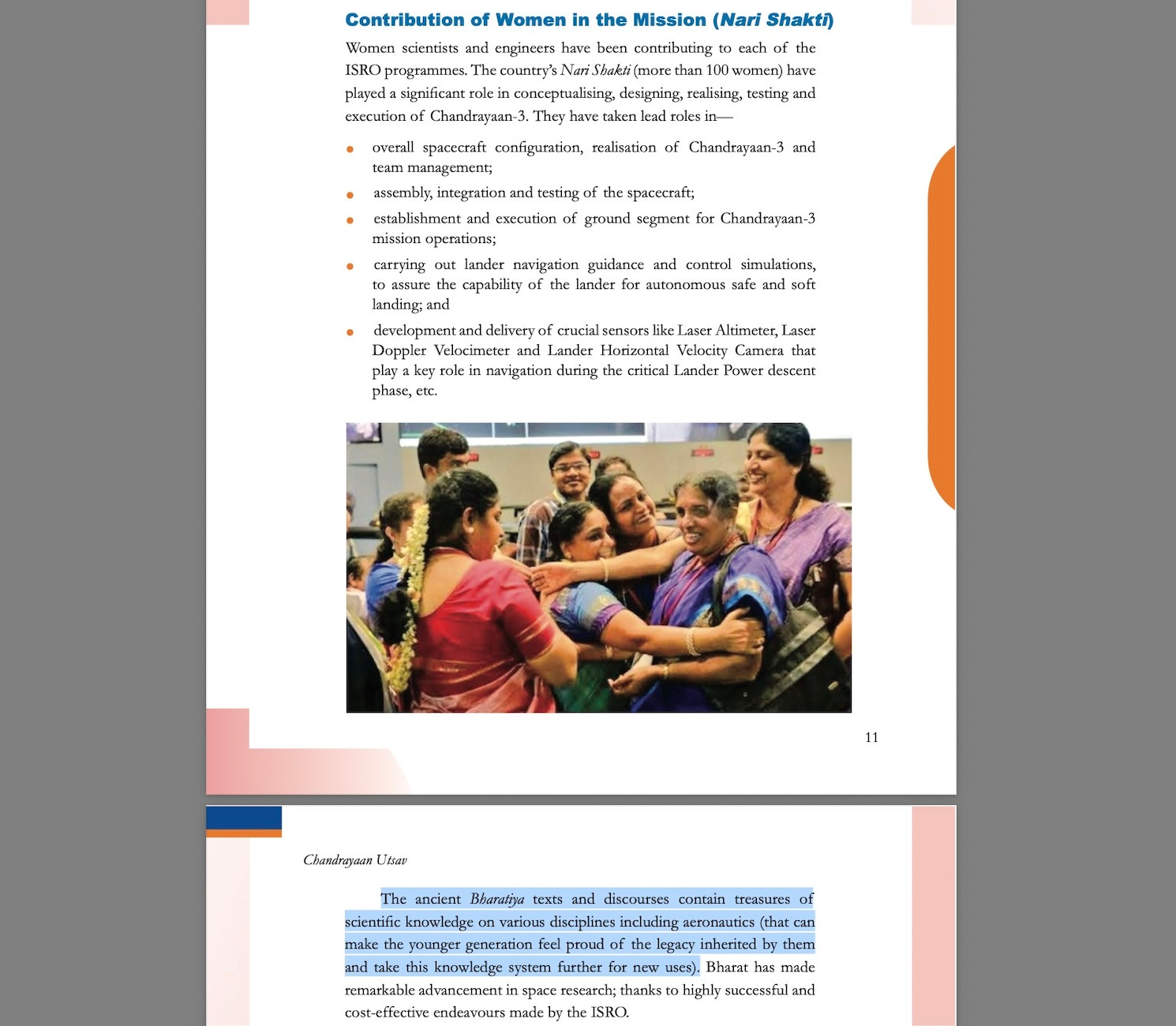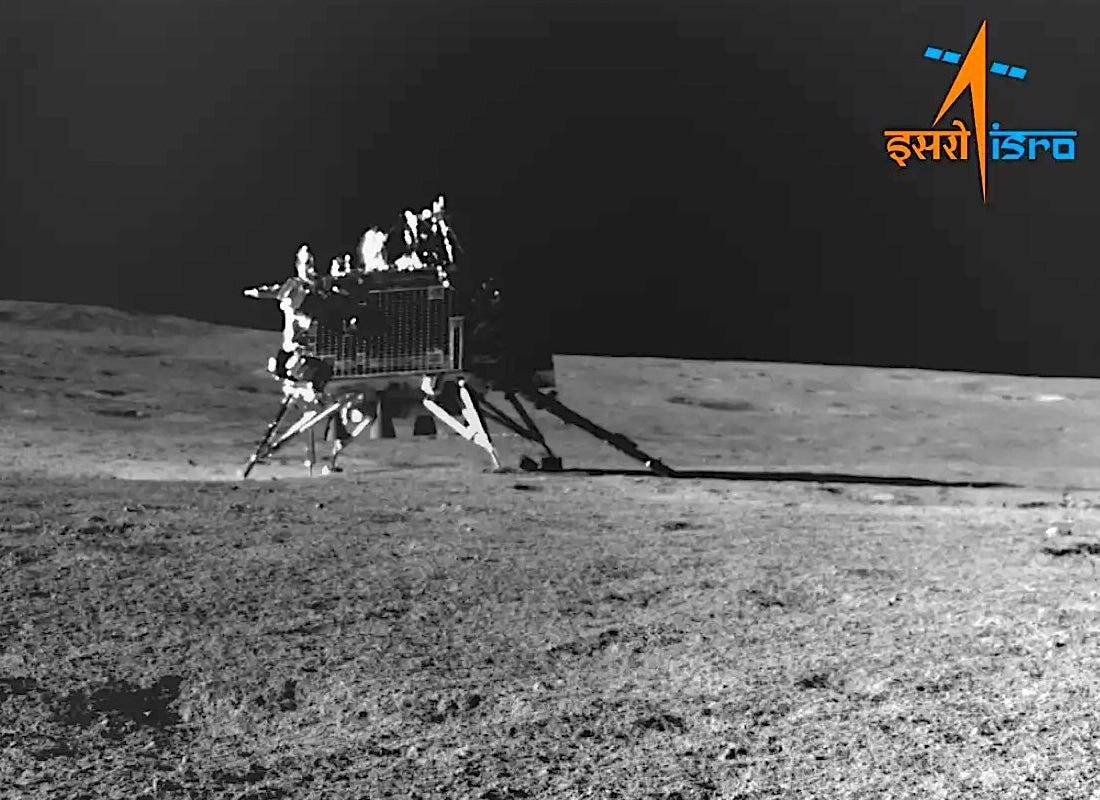Indian Space Progress #10: ISRO aces safety test for human spaceflight while school students to learn about Chandrayaan 3 mixed with mythology
I’m stoked to welcome KaleidEO as the third organization sponsor of my monthly Indian Space Progress reports! 🚀
Bengaluru-based KaleidEO is a SatSure company on a mission to elevate the value of information from Earth observation satellites by offering analytics-ready data coupled with its upcoming optical and multispectral satellites touting on-demand, near-meter resolution imaging with a large swath of 65 kilometers—all enhanced with onboard edge processing. 🛰️
Personally, I like that SatSure has been using public Earth observation data to provide analytics that uniquely solve agricultural, banking, and infrastructure problems in India. Lastly, a sincere thanks to Prateep Basu and Krishna Reddy for actively supporting my independent space writing. 🌏
I was sad to work on this edition of Indian Space Progress. Even as we celebrate a successful safety test key to human spaceflight and ISRO’s newly announced ambition of sending an Indian to the Moon by 2040, having more than 200 million Indian school students learn about Chandrayaan 3 mixed with mythology is a worrying development.
What made ISRO’s October abort test towards human spaceflight notable

On October 21, ISRO launched a single-stage rocket for the Test Vehicle Demonstration mission-1 (TV-D1), the first of 20 tests the agency will conduct before it deems safe to fly astronauts for the ambitious Gaganyaan mission mid-decade. The TV-D1 rocket—which is a modified GSLV Mk II liquid booster—lofted a full-scale, unpressurized 4520-kilogram Gaganyaan crew module mated to its escape system to an altitude of 11.2 kilometers in 61 seconds. At this point, when the combined vehicle was past the speed of sound, the escape system automatically lit up and separated the crew-less module from the rocket.
The module then coasted upwards, detached from the escape system at an altitude of 16.9 kilometers, and then deployed its drogue parachutes. At 2.5 kilometers, the module deployed the main parachutes, leading to a splashdown in the Bay of Bengal about 10 kilometers away from the launch site. This successful test means that ISRO’s crew escape system can safely carry astronauts away from the launch vehicle in the case of an emergency.
Here are some interesting things to note about the test:
- The crew module was upside down after splashing, which is not an issue since this flight didn’t carry floatation devices which will be there on future tests and during actual missions.
- Stephen Clark noted that ISRO timed the crew escape systems’s trigger for when the rocket was experiencing the flight’s maximum aerodynamic forces, making it the most demanding time for an abort.
- Johnson T. A. reports that the TV-D1 crew module lacked an onboard control system. That’s because ISRO wanted to use the flight data to better understand the requirements and conditions for putting the crew module in safe positions and orientations during actual Gaganyaan flights. It also meant that the drogue parachutes on this flight had to deploy only when the module achieved a specific angle, which it did.

S. V. Krishna Chaitanya reports that next up ISRO will better test aspects of the crew module’s parachute system by dropping a representative 3,000-kilogram module from a 4-kilometer altitude using a heavy-lift helicopter. Chethan Kumar reports that it would be followed by another abort test early next year. Here, the escape system will lift the module away while the rocket is at the launchpad itself to simulate pad emergencies. ISRO did conduct one such test in 2018 but this redo is necessary because there have been substantial design changes to Gaganyaan since.
Adding to the growing scope of Gaganyaan beyond the inaugural and initial set of missions, the country’s Prime Minister Narendra Modi directed ISRO on October 17 to create an Indian Space Station in Earth orbit by 2035. This would be followed by sending the first Indian to the Moon by 2040.
Over 200 million Indian school students to learn about Chandrayaan 3, mixed with mythology
On October 17, the National Council for Education Research and Training (NCERT) introduced a reading module for middle-school students called “Chandrayaan Utsav”. It was released by Union Education Minister Dharmendra Pradhan in the presence of S. Somanath, Chairman of the Indian Space Research Organisation, and claims that the Chandrayaan-3 achievement was great but not the first, that “literature tells us that it can be traced back [to the] Vymaanika Shaastra: Science of Aeronautics, which reveals that our country had the knowledge of flying vehicles” in ancient times.
(Note for non-Hindi readers: Utsav means festival)
This piece of disturbing news landed in my feed via Mukunth’s blog. Like him, I too am surprised that the ISRO Chief did not correct the Union Education Minister, at the very least because the statement effectively sidelines the entire Chandrayaan 3 team’s achievement of an autonomous Moon landing—a technological feat that genuinely deserves to be celebrated for itself, and has been globally recognized.
But things only get worse. The reading module (PDF) also goes on to readily mix mythology with science throughout, as if the author indulged in a work of fiction. That these are deliberate inclusions of propaganda is acutely clear in the section highlighting mission contributions by women scientists wherein a totally irrelevant para appears out of the blue:
The ancient Bharatiya [Indian] texts and discourses contain treasures of scientific knowledge on various disciplines including aeronautics (that can make the younger generation feel proud of the legacy inherited by them and take this knowledge system further for new uses).
See the highlighted text in the screenshot below to realize the abruptness of its placement:

It gets worse still. The “All India People’s Science Network” has collated and listed numerous errors in the reading material, even in what are supposed to be scientific and technical factual aspects of Chandrayaan 3 and the Moon.
The material was criticized by several Indian media outlets and pro-science organizations, including a sharp response by The New Indian Express which cites former ISRO Chief G Madhavan Nair calling the ancient texts “scientific fiction” and also points out known flaws in these recycled claims:
Research by the Aeronautical Engineering Department of the Indian Institute of Science (IISc) revealed that the book, Vymaanika Shaastra, was written by Sanskrit scholar Subbaraya Shastri in 1923. “The (IISc) research proved that it was not possible for those planes to fly according to the laws of aerodynamics and Newton’s laws of motion. Any plane manufactured based on these ideas would surely have met with a horrible accident. And these are just the fanciful ideas of the author,” Dipti B, State Secretary, Breakthrough Science Society (BSS), Bengaluru, said.
Instead of responding to the criticism by withdrawing the material for a rewrite that would exclude pseudoscientific claims, the Union Ministry of Education instead defended it with a press release from the Government of India:
Mythology and philosophy put forward ideas and ideas lead to innovation and research. Numerous research studies emphasize that mythology plays an indispensable role in the cultural fabric of any country, including Bharat. Furthermore, the integration of culture into education not only fosters a profound understanding of a nation’s historical legacy but also bolsters creativity and problem-solving skills among students. It’s the whole gestalt of India’s association with sky and space.
What makes the situation more stressful is that this isn’t even the first instance of still-malleable Indian students getting dosed with pseudoscience. Earlier this year, the Central Board of Secondary Education revised their curriculum and excluded natural selection and the periodic table from Class X textbooks.
Many thanks to the Takshashila Institution, SkyServe, KaleidEO and Gurbir Singh for sponsoring this month’s Indian Space Progress report.
How NASA’s Gateway project is a promising path for India to send a human to the Moon by 2040

To realize the ambition of sending an Indian to the Moon, the Indian Department of Space (DOS) will develop a roadmap for lunar exploration, which will comprise a series of Chandrayaan missions, the development of a partially reusable Next Generation Launch Vehicle (NGLV), a new launch pad, and more.
The first of this “series of Chandrayaan missions” will be the joint ISRO-JAXA mission LUPEX. Unlike what most media reports and ISRO-JAXA claim though, LUPEX won’t launch in 2025 or even 2026. Launching before end of decade, LUPEX comprises an ISRO-developed ~6000-kilogram lander which will deliver a JAXA-built ~350-kilogram rover to directly study the nature, abundance, and accessibility of water ice at the Moon’s south pole. LUPEX and its successors will provide ISRO with crucial data to plan crewed lunar surface missions.
Of course, India is a long way away from realizing the trove of technologies needed to plan the feat of an indigenous human Moon landing. ISRO recognizes the sheer scope of its Moonbound undertaking, and that’s why the date to send an Indian to Luna reads “by 2040”—realistic yet aspirational. Note though that the associated press release only specifies sending the first Indian “to the Moon” by 2040. It doesn’t tell if Indians will land on the Moon or be sent to lunar orbit. The latter is definitely achievable by 2040, and is also where India’s recent signing of the US-led Artemis Accords offers a gateway—literally.
ISRO Chief S. Somanath said in a March 2023 interview—before India signed the Accords—that the agency is considering contributing to the Gateway, an upcoming NASA-led international lunar orbital station for Artemis astronauts. And so similar to how NASA is providing crew seats to Japan, Europe, and Canada in return for their respective contributions to the Gateway, India can grab one as well. This isn’t to say India won’t eventually send humans to the Moon by itself anyway but that the Gateway presents the path of least resistance. Being an Accords signee will only be of aid to India here, especially when considering that the associated factsheet from the recent India-US agreements signals a wide scope for human spaceflight cooperation between the two countries:
NASA will provide advanced training to ISRO astronauts with the goal of launching a joint effort to the International Space Station in 2024. Additionally, NASA and the ISRO are developing a strategic framework for human spaceflight cooperation by the end of 2023.
Hopefully ISRO gets the much needed substantial budget increases starting next year to back up and reinforce these newfound ambitions.
More Moonbound bits
- Chandrayaan 3 blew off two tons of Moon material while landing (probably)
- Pakistan joins China’s long-term lunar exploration project, and how not to interpret it
- The Times of India confirmed that there are two 1-watt radioisotope heater units (RHUs) on the Chandrayaan 3 propulsion module, which is in lunar orbit right now. ISRO didn’t previously announce the RHU’s presence. The mission’s Project Director P. Veeramuthuvel said the RHUs couldn’t be installed on the lander and rover for their lunar night survival due to mass constraints. The RHUs, made in collaboration with the Bhabha Atomic Research Center, are based on the radioactive source of Americium-241. The Indian space agency’s foray into operational RHUs is a great sign as it’s precisely the technology that enables hardware like China’s Chang’e 4 lander and rover to wake up after frigid lunar nights. ISRO’s future Moon mission designs might now find an RHU option at their disposal.
More Indian space
- The Aditya-L1 space-based solar telescope returns first observations of the Sun’s flares in high energy X-rays.
- As ISRO and NASA space-qualify the joint NASA-ISRO Synthetic Aperture Radar (NISAR) Earth observation satellite for its 2024 launch, here’s an overview of how its advanced radar system will help scientists better monitor deforestation and wetland flooding.
- ISRO’s U R Rao Satellite Centre (URSC) announced a planetary robotics challenge for student teams across India to build rovers and compete on Moon-and-Mars-like landscapes. ISRO hopes for this challenge to morph into a platform where students and the space agency actively collaborate on space robotics.
Sponsored job listings
- The Takshashila Institution is hiring a Research Analyst to work alongside various stakeholders and policymakers on both domestic and international aspects of India’s ongoing efforts to build its space power, including how to enhance international cooperation.
- SkyServe is hiring a Systems Engineer into their team in Bengaluru developing edge computing systems to equip the next generation of Earth observation satellites with autonomous capabilities.
